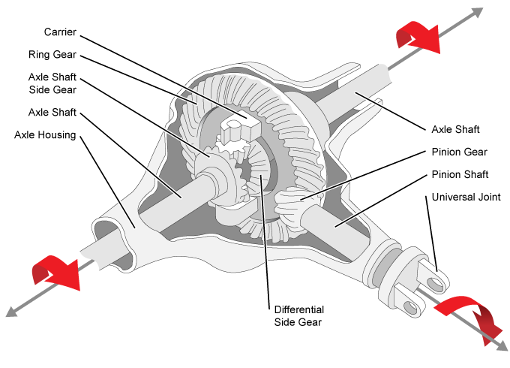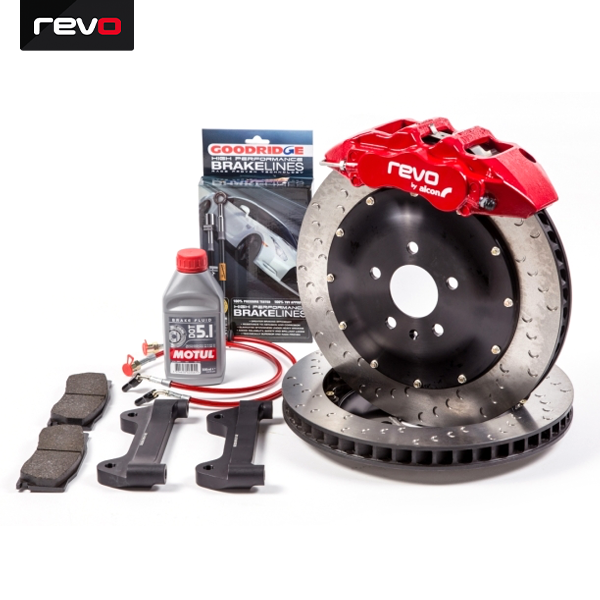Understanding the VAQ Differential in VAG Performance Cars
When it comes to modern front-wheel-drive and Haldex-based AWD performance vehicles, putting power down efficiently is everything. That’s where Volkswagen Group’s VAQ differential comes into play — a clever piece of technology designed to improve handling, traction, and overall driving engagement.
Let’s dive into what the VAQ differential is, how it works, and which vehicles feature this advanced system.
What Is the VAQ Differential?
VAQ stands for “Vorderachsquersperre” — a German term meaning “front axle transverse lock.” It’s Volkswagen Group’s name for an electronically controlled limited-slip differential (eLSD) that actively manages torque distribution between the front wheels.
Unlike basic open differentials that rely on brake-based traction control, the VAQ system prevents wheelspin by transferring torque to the wheel with more grip — providing improved cornering dynamics and traction in both dry and slippery conditions.
How It Works
The VAQ differential uses a multi-plate clutch pack (similar to a Haldex all-wheel drive system) integrated into the front axle differential housing. It’s operated via an electro-hydraulic actuator, controlled by the car’s onboard computers (primarily the ESP/ESC system and drivetrain control module).
Here’s what happens in real-time:
-
During cornering or aggressive acceleration, sensors detect differences in wheel speed and load.
-
The system sends hydraulic pressure to engage the clutch pack, directing more torque to the outside wheel (with more grip).
-
This actively reduces understeer, enhances turn-in, and improves traction exiting corners.
Unlike brake-based systems, which cut power to reduce slip, the VAQ system reallocates torque, delivering better performance without compromising momentum.
Key Benefits of VAQ
-
Improved traction in low-grip conditions (rain, snow, or dirt)
-
Enhanced cornering stability and faster corner exits
-
Reduces understeer commonly found in FWD platforms
-
More precise handling compared to brake-based torque vectoring
-
No driver input required – it’s fully automatic
Which VAG Vehicles Have the VAQ Differential?
Not all VAG performance cars have VAQ — it’s typically reserved for mid-to-high trim levels of front-wheel-drive hot hatches or sedans. Here’s a list of models that feature the VAQ differential (either standard or optional):
Volkswagen
-
Golf GTI Performance (Mk7 & Mk7.5)
-
Golf GTI Clubsport / Clubsport S
-
Golf GTI TCR
-
Golf GTI Mk8 (standard VAQ)
-
Golf GTD Mk7.5 (Performance Pack)
SEAT / CUPRA
-
Leon Cupra 280 / 290 / 300 (Mk3)
-
Leon Cupra R
-
Cupra Leon Mk4 (2020+) — higher trims
-
Cupra Formentor VZ (FWD variants)
Škoda
-
Octavia vRS 245 / 250 / 280 (FWD variants)
-
Octavia RS Mk4 (selected FWD trims)
Audi
-
Audi S1 (includes rear diff with similar torque vectoring)
-
*Some FWD A3 2.0 TFSI S line models (Performance Packs, EU only)
Note: AWD models like the Golf R or Audi S3 use a Haldex AWD system, which incorporates a similar clutch-based rear differential, but it’s not the same as VAQ (front axle specific).
Maintenance & Longevity
The VAQ differential uses its own dedicated hydraulic fluid, similar to DSG transmission oil. It’s generally maintenance-free, but for enthusiasts or track-driven cars, fluid changes every 60,000–80,000 km (or ~50,000 miles) are recommended to preserve optimal performance.
The VAQ differential is one of the smartest solutions VAG has engineered for FWD performance cars. By actively managing torque across the front axle, it brings noticeable improvements in traction, grip, and handling — especially during spirited driving or on the track.
If you’re shopping for a GTI, Cupra, or an Octavia VRS, look out for the VAQ-equipped trims — it’s a game-changer that transforms how these cars handle corners and power delivery.
For pricing on the VAQ diff service, contact us using the options on our contact page ‘here‘.






